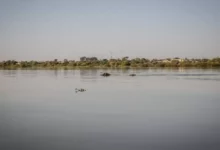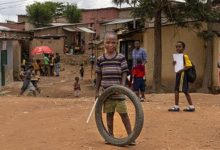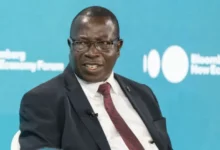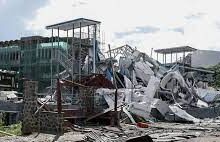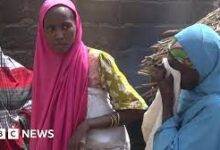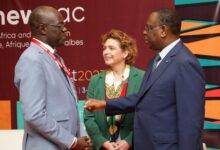
For nearly nine years, people in rebel-held Kauda in Sudan’s South Kordofan state have been monitoring the skies for the planes coming from capital, Khartoum.
The residents in Kauda watched the movement of aircraft to warn others of either the government’s surveillance or dropping of bombs in the conflict-ridden area.
But for the first time since the war broke out in 2011, three planes from Khartoum landed in Kauda on Thursday, carrying representatives from Sudan’s months-old transitional government led by Prime Minister Abdalla Hamdok as well as diplomats and representatives from humanitarian organisations.
“After all the bombardments that used to come from planes in the sky, this is a big change to see planes coming with a government delegation pushing for peace,” resident Anas Ibrahim told Al Jazeera.
Ibrahim was among tens of thousands of people who gathered at a square near the airstrip in Kauda to welcome the delegation. “It’s the first time a plane comes for something good in so many years,” he said.
Kauda, nicknamed “the fortified place” for being surrounded by the Nuba mountains, is a stronghold of the rebel Sudan’s People Liberation Movement-North (SPLM-N) led by Abdelaziz al-Hilu.
The group was born out of SPLM, which led a war against the Sudanese government from 1983 to 2005, making it one of the longest continuing civil wars in Africa.
The movement was mostly made up of fighters from the south, but also included soldiers from South Kordofan and Blue Nile states.
In 2005, when SPLM signed a peace deal with the Sudanese government, South Kordofan and Blue Nile were termed as “the two areas”.
While southern Sudan, which gained a semi-autonomous status following the deal, was granted right to a referendum to decide whether it wanted independence, the two areas were granted “popular consultation”.
The deal did not clearly define how the popular consultation would take place and who was eligible to join it. While fighters from the two areas fought for the southern side during the civil war, the areas also had a large population that supported the northern government.
Tensions reached a peak in 2010 during the national and gubernatorial elections. Al-Hilu, who ran for governorship on an SPLM ticket, accused Ahmed Haroun, the then incumbent governor, of rigging the votes in his favour.
Haroun is accused by the International Criminal Court of war crimes and crimes against humanity in the western region of Darfur.
South Sudan voted for independence in 2011 according to the 2005 deal, but the Sudanese government showed no signs of wanting to define what “popular consultation” was or if the two areas would get the chance to hold it.
Al-Hilu announced his rebellion in June that year, a month before South Sudan officially seceded. The Sudanese government responded to the rebellion with indiscriminate aerial bombardment and shelling.
“Wipe them [off], sweep them,” Haroun said in a video two months after the war started. “Don’t bring them back to us alive.”
The exact death toll from the war in South Kordofan is not known as Sudan’s government under longtime ruler Omar al-Bashir blocked medical and humanitarian aid in areas controlled by the SPLM-N.
More than 100,000 people have been displaced, with most of them seeking shelter in camps in neighbouring South Sudan.
pix-Prime Minister Abdalla Hamdok and SPLM-N leader Abdel-Aziz al-Hilu hold up hands during the visit to Kauda [Nariman El-Mofty/AP]

